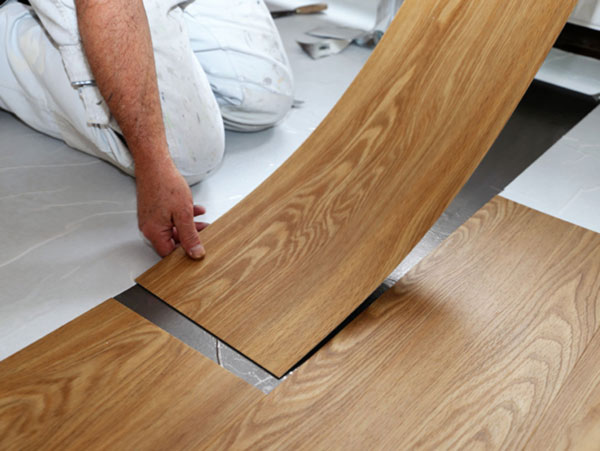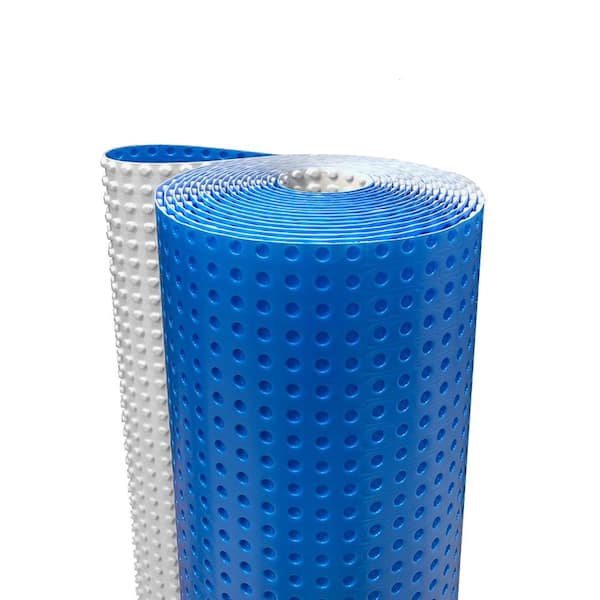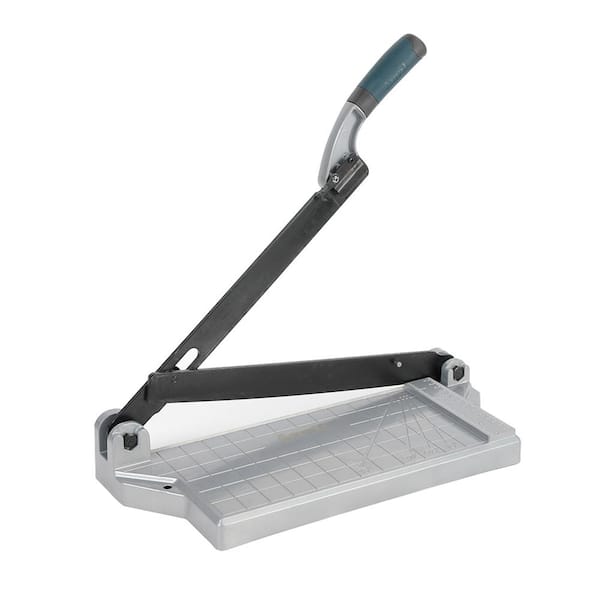How to Install Vinyl Flooring on Concrete
Looking to spruce up your concrete floors? Vinyl planks are an affordable yet stylish option. The wood pattern, texture, and pattern of vinyl planks transform a room from an ordinary look to awesome.
We created this guide to show you the steps to install vinyl plank flooring on concrete. Depending on your floors you can skip a step or two, but we tried to include everything. So, grab your tools and let’s get started.
If you’re looking for an easy-to-install floor covering for a concrete subfloor that will resist wear and look great longer than practically any other flooring material, consider vinyl flooring. Vinyl Plank Flooring has changed the entire flooring industry. Vinyl flooring products have gone from ordinary and cheap looking to a very respectable look and feel rivaling wood floors.
The highest-quality plank flooring are called luxury vinyl plank. It has a rigid core made from wood plastic composite (WPC) or stone plastic composite (SPC) and an insulating backing. You can also choose a less-expensive product without the core or the backing, which is more appropriate for utility spaces like a garage. Less-expensive products often come with glue-together strips, and some types must be glued to the subfloor, but the majority has a locking profile similar to the one on laminate planks, and you install them using basically the same procedure as you use to install laminates.
A concrete subfloor typically requires very little preparation for vinyl flooring. It has to be flat, and even though vinyl is waterproof, a floating floor always benefits from a moisture barrier. Vinyl plank flooring with a robust backing has some insulation value but not much, so if you want the cold concrete to feel more comfortable, you may have to install a thermal underlayment or even build a raised plywood subfloor.
Tools And Supplies You Will Need
- Vinyl planks
- Tape measure
- Utility knife
- Pencil
- ¼ inch spacers
- Putty knife and pry bar
- Mallet
- Tapping block
- Carpenter’s level
The Basics
Vinyl plank is designed to connect through click and lock and glue down techniques. Most of the vinyl planks are designed to be laid on the existing floor. However, you need to assess the condition of the surface on which you want to put the vinyl plank. Before installation, you should make sure that your sub-floor is in perfect condition, smooth, clean, dust free, and damage free. The most asked question is on whether you need underlay for vinyl plank flooring or not. For the case of concrete floors, an underlay is necessary for your sub-floor. The underlay adds an extra cushion on your floor and makes it softer and increase the floors insulating capability, thus keeps it warm even during winter.
Preparing a Concrete Subfloor for Vinyl
Newly poured concrete releases water vapor and typically needs about 3 months to dry before it’s ready to lay flooring over it. Vinyl plank flooring is water resistant, so it won’t get damaged by the moisture. However, mold will grow underneath it, and that may eventually smell bad and lead to health problems down the road. If you select glue-down plank flooring, the excess moisture may also damage the adhesive used to hold it down.
There are technical ways to measure moisture, but the rule of thumb is to make sure all new concrete has had 3 months to dry. And, use a moisture barrier on top of the concrete. The barrier can be as simple as tar paper but Home Depot and other warehouse stores sell padded moisture barriers that also add padding for more comfort. Not too much added cost and worth the trouble.
Repair cracks on the floor
Vinyl flooring is flexible, but the planks will come apart if you do not prepare the concrete subfloor. The first thing you need to do is fix any cracks that can compromise the stability of the subfloor. Hairline cracks are easy to fix. Squeeze a bottle of concrete patching compound or filler over a crack to fill them in. Use a trowel to smooth the compound. The best option might be a thin layer of self-leveling concrete followed by a vapor barrier and foam or cork underlayment.
Providing Extra Insulation
Best bet before laying your planks is to lay down a moisture barrier on the concrete, that is specifically made for vinyl underlayment. These are foam or cork underlayment, but most just look like a thick sheet of plastic that has padding. If you use an underlayment that doesn’t include a moisture barrier, it’s a good idea to install a sheet of plastic or tar paper below it for insurance. Plastic sheeting is easy to install, and it won’t add much time or expense to the overall procedure.
If you want to achieve the maximum comfort level, you can also build a plywood subfloor or by using a subflooring system, such as DRICORE tiles. This strategy separates the floor covering from the concrete and allows moisture from a below-grade subfloor to dissipate. It makes the floor feel warmer, especially if you add insulation between the joists before installing the plywood. Adding a plywood, or other thick subfloor, will raise the floor level so be sure to take measurements as you may have to shave a small amount off the bottom of doors.
You can install floating vinyl flooring on a subfloor with radiant heat as long as the temperature doesn’t exceed the manufacturer’s recommendation, which is usually in the neighborhood of 80 to 85 degrees Fahrenheit. If the subfloor is dry and you use a product with a backing and a robust core, you can safely skip the underlayment altogether. Glue-down vinyl plank flooring isn’t recommended on a subfloor with radiant heat.
Before You Start the Installation
You generally remove the baseboards before installing a floating floor and reinstall them afterward, but if that’s impractical, plan on nailing quarter-round molding to the existing baseboards after laying the flooring. You need it to cover the 1/4-inch expansion gap, which you must provide to prevent buckling and to hold the floor down.
You’ll also want to have enough flooring on hand to complete the job. To make sure, measure the area of the floor in square feet, add 10 percent, divide this number by the number of square feet in a box and buy that number of boxes. You’ll need the extra for cutting waste and other problems that inevitably arise.
When the new flooring arrives, open the boxes, spread the planks around the installation space and give them at least 48 hours to acclimate. It’s a good idea to mix up the planks from different boxes, too, which ensures color uniformity on the finished floor. While you’re waiting, undercut the door jambs with a handsaw and use a piece of flooring as a guide to make sure you cut enough to get the flooring underneath but no more
What are the differences between Click Lock Vinyl and GripStrip Vinyl Flooring?
Installing Click Lock Vinyl Plank Flooring
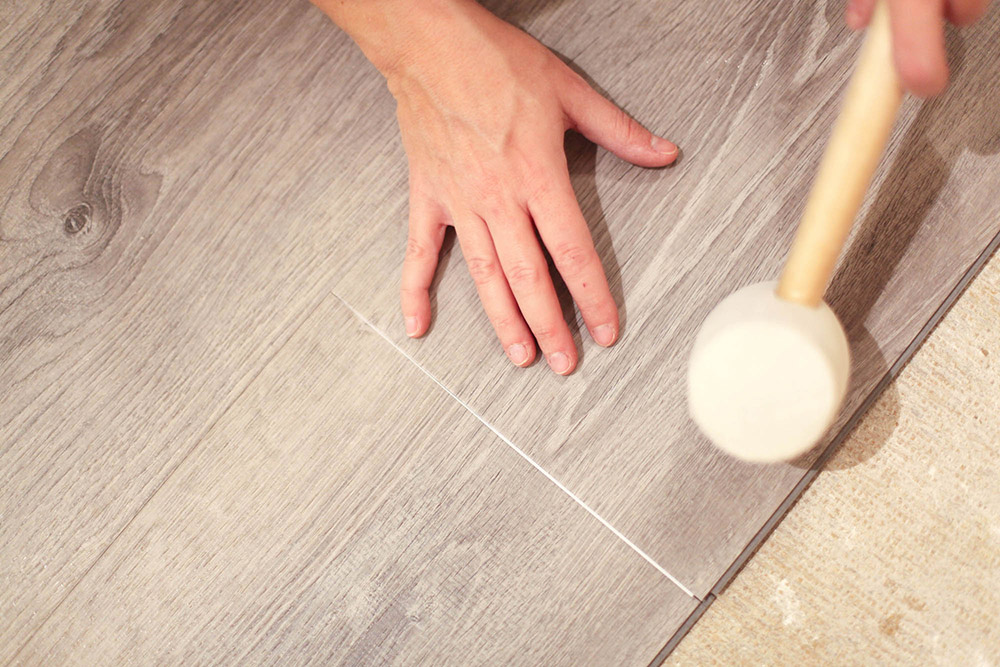
- Trim the short tongue edge from the first vinyl plank.
- Lay the first plank, appropriately spaced from the wall. Install the second plank by holding it at an angle and inserting its tongue edge into the first plank’s groove edge. Lower the second plank to snap the planks together.
- Continue in this manner for the remainder of the row, trimming the last plank as needed.
- For the second row, use the same angle-and-snap method, attaching them side-by-side to the planks in the first row as well as to one another. Continue for the rest of the room.
- Trim the border planks as needed and leave appropriate expansion space between the planks and the wall.
Installing GripStrip Vinyl Plank Flooring
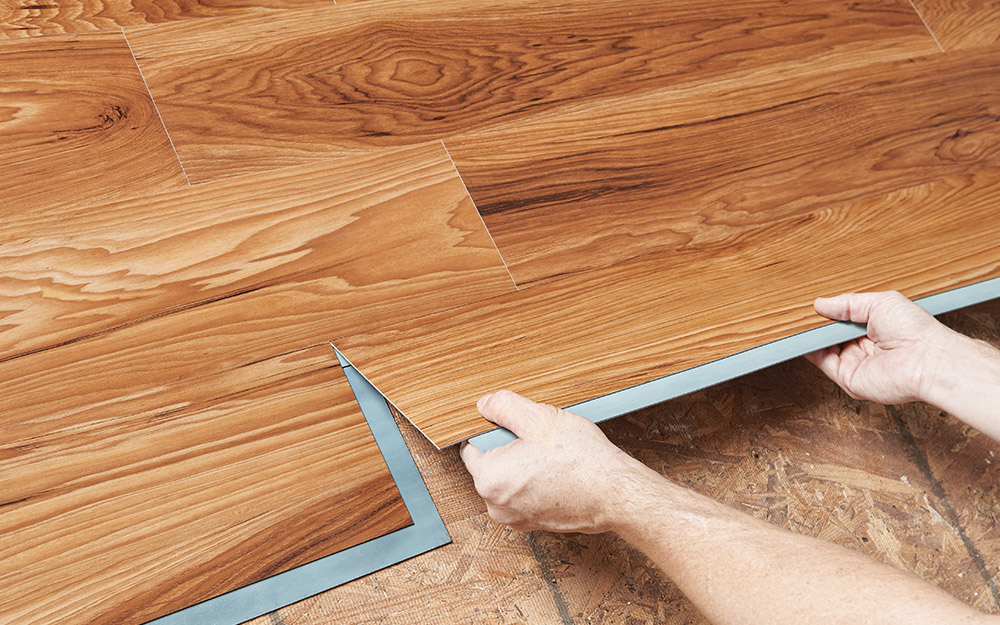
- Lay the first row of vinyl plank flooring along the wall, leaving the manufacturer-recommended amount of expansion space between the plank’s edge and the wall (usually about 1/4-inch). If the planks are cut, make sure the cut edge is facing the wall.
- Butt the planks end-to-end, overlap the adhesive strips and press down firmly using a hand roller to administer even pressure over each plank.
- Continue to work across the room, making sure each plank is securely and tightly pressed together along the grip strip seams.
- For the border, trim the planks to fit and press into place, while leaving appropriate expansion room as you did with the first row.
- Replace the baseboard by nailing it to the wall, not the flooring.
- When installation is complete, remove the spacers and roll the entire floor in both directions using a 75 pound or 100 pound floor roller.
Step by Step
Step 1: Measure the Room and Draw a Line
Most rooms aren’t square, and you can avoid large triangular gaps in the last row by using a technique that pros use. Select the wall along which you want to lay the first row and then measure the width of the room at both ends using a tape measure. Calculate the difference and measure half this distance from the wall at the wider end of the room, adding 1/4 inch for expansion. Make a mark and snap a chalk line from this mark to the opposite corner, again adding 1/4 inch, and lay the first row along this line.
Step 2: Lay the First Row
Cut the tongues off the planks that go in the first row using a utility knife and lay the planks end to end, snapping the ends together as you go. If the last plank turns out to be shorter than 6 inches, cut a few inches off the first plank and move the row back to accommodate a longer plank at the end. It’s a good idea to put spacers between the planks in the first row and the wall to maintain the required expansion gap.
Step 3: Cut With a Utility Knife
You don’t need a saw to cut vinyl plank flooring. To make a crosscut, draw a line with a pencil and straightedge, score along the line with the knife and snap along the score line. You can also cut notches and curves with a knife, but it usually requires two or more passes to cut all the way through the material.
Step 4: Install the Second Row
Use the offcut from the first row to start the second one as long as the end doesn’t come any closer than 6 inches from the end joint in the first row. Maintain this 6-inch stagger pattern on the entire floor for appearance and stability. Because vinyl is flexible, the easiest way to install a plank is to snap its end to the previous one and then snap it lengthwise to the one next to it. You may need to tap the plank with a tapping block and mallet to get it to lock.
Step 5: Keep Going to the Opposite Wall
Continue installing planks in this way, maintaining the 6-inch stagger pattern and cutting notches and curves as needed to fit the planks in place. The stagger pattern should be as random as possible. Avoid regular increments that create a step pattern and joints separated by one or two planks that align, which is known as an H-pattern.
Step 6: Install the Last Row
When the room isn’t square, it’s best to cut and install the last row plank by plank rather than cutting all the planks at once. Measure the gap from one end of the first plank to the other, add 1/4 inch, draw a line on the plank and cut along the line with a knife. Install the plank using a laminate pull bar to draw it against the one next to it. Use the same technique to install all the planks in the last row.
Step 7: Install the Baseboards
Use baseboard material that’s wide enough to cover the gaps. If they are wider than 3/4 inches due to the room being severely out of square, you may have to widen standard 3/4-inch baseboards with quarter-round foot molding. Be sure to nail the baseboards to the wall and the foot molding to the baseboards. Do not nail or glue anything to the floor, or the planks won’t be able to move, and the floor may buckle.
Installing Glue-Together and Glue-Down Planks
The procedure for installing glue-together planks is virtually identical to that for installing click-lock planks, but instead of snapping the planks together, you remove the backing from the glue strips, butt the planks together and press down to seal the adhesive. The most important thing to remember is to avoid getting dust on the glue strip after you’ve removed the backing. Dust prevents the glue from adhering, and the planks will lift.
To install glue-down planks, you spread a coat of mastic on the subfloor using a 1/4-inch notched trowel and lay the planks in the mastic. You can cut the planks with a knife, and you must still provide an expansion gap to prevent buckling. After all the planks are secured, roll the floor with a floor roller to press the planks into the adhesive and prevent bubbles and lifting.
Great sources of information on vinyl flooring if you’d like to learn more:
Hunker.com
WhatIsVinyl.com


